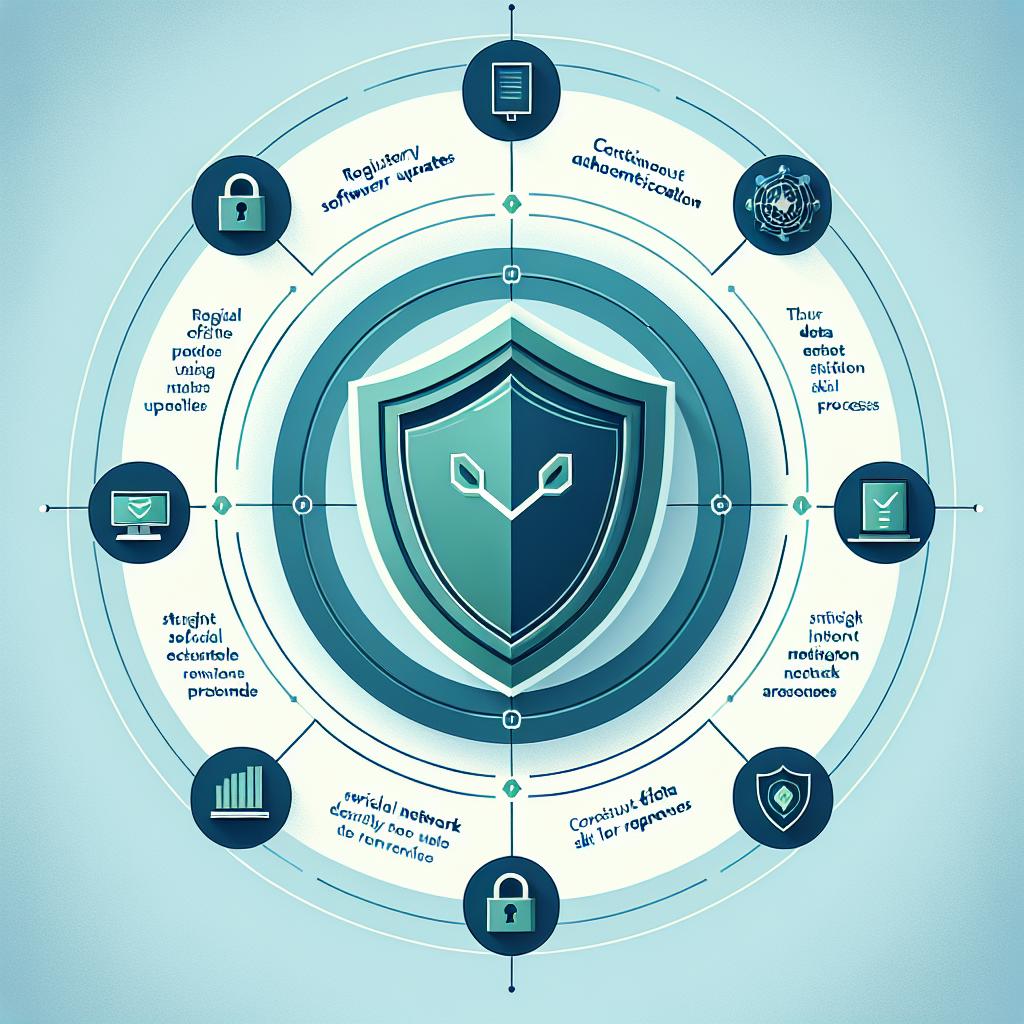In today's digital landscape, cybersecurity is more critical than ever. With the rapid evolution of technology, cyber threats are becoming increasingly sophisticated, making it essential for individuals and organizations to adopt robust cybersecurity practices. Here are some best practices to help you stay ahead of evolving threats.
1. Regular Software Updates
One of the simplest yet most effective ways to protect your systems is to keep your software up to date. Software developers frequently release updates to patch vulnerabilities that could be exploited by cybercriminals. This includes operating systems, applications, and antivirus software. Enable automatic updates whenever possible to ensure you are always protected against the latest threats.
2. Strong Password Management
Weak passwords are a common entry point for cyber attackers. To enhance your password security:
- Use Complex Passwords: Create passwords that are at least 12 characters long and include a mix of uppercase and lowercase letters, numbers, and special characters.
- Avoid Reusing Passwords: Each account should have a unique password to prevent a breach in one account from compromising others.
- Utilize Password Managers: These tools can help you generate and store complex passwords securely, making it easier to manage multiple accounts.
3. Multi-Factor Authentication (MFA)
Implementing MFA adds an extra layer of security by requiring more than just a password to access an account. This could involve a text message with a code, a fingerprint scan, or a security token. Even if a password is compromised, MFA can significantly reduce the risk of unauthorized access.
4. Employee Training and Awareness
Human error is often the weakest link in cybersecurity. Regular training sessions can help employees recognize phishing attempts, social engineering tactics, and other common threats. Encourage a culture of security awareness where employees feel comfortable reporting suspicious activities.
5. Data Encryption
Encrypting sensitive data ensures that even if it is intercepted, it cannot be read without the proper decryption key. This is particularly important for data in transit (such as emails) and data at rest (such as files stored on servers). Use strong encryption standards to protect your information.
6. Regular Backups
Data loss can occur due to various reasons, including cyberattacks like ransomware. Regularly back up your data to a secure location, such as an external hard drive or a cloud service. Ensure that backups are encrypted and test them periodically to confirm that they can be restored successfully.
7. Network Security Measures
Implementing robust network security measures is crucial for protecting your systems. This includes:
- Firewalls: Use firewalls to monitor and control incoming and outgoing network traffic based on predetermined security rules.
- Intrusion Detection Systems (IDS): These systems can help detect and respond to potential threats in real-time.
- Virtual Private Networks (VPNs): VPNs encrypt internet traffic, making it more difficult for attackers to intercept data, especially when using public Wi-Fi.
8. Incident Response Plan
Having a well-defined incident response plan is essential for minimizing damage in the event of a cyber incident. This plan should outline the steps to take when a breach occurs, including:
- Identifying the breach
- Containing the threat
- Eradicating the cause
- Recovering affected systems
- Communicating with stakeholders
Regularly review and update your incident response plan to ensure its effectiveness.
9. Monitor and Audit Systems
Continuous monitoring of your systems can help detect unusual activities that may indicate a security breach. Implement logging and auditing practices to track access and changes to sensitive data. Regularly review these logs to identify potential threats early.
Cybersecurity is a constantly evolving field. Stay informed about the latest threats and vulnerabilities by following reputable cybersecurity news sources, blogs, and forums. Participate in industry conferences and training sessions to keep your knowledge up to date.
Conclusion
As cyber threats continue to evolve, adopting these best practices can significantly enhance your cybersecurity posture. By staying proactive and vigilant, you can protect your data and systems from potential attacks. Remember, cybersecurity is not a one-time effort but an ongoing process that requires continuous improvement and adaptation to new challenges.


